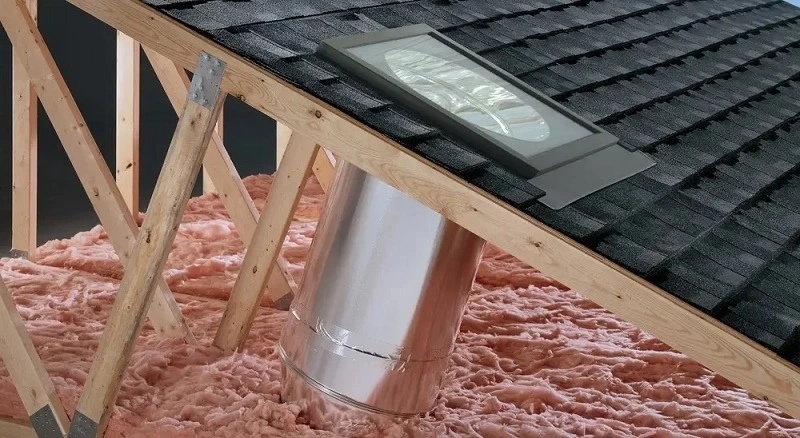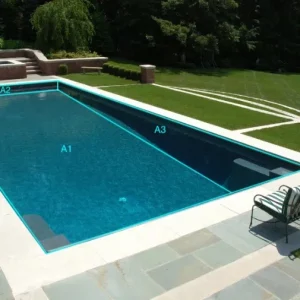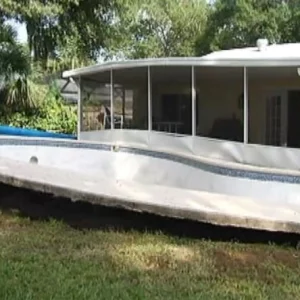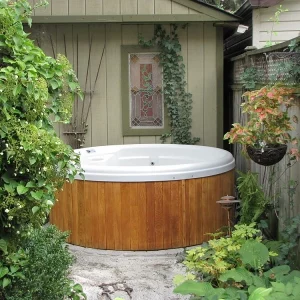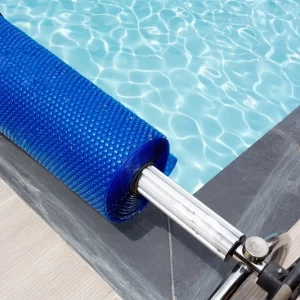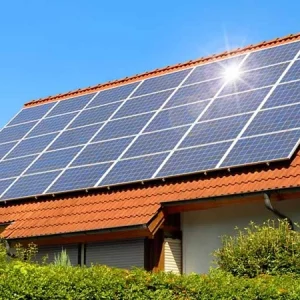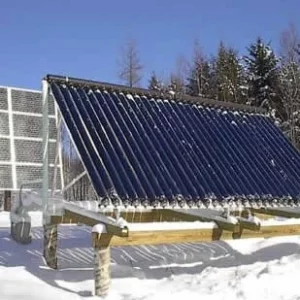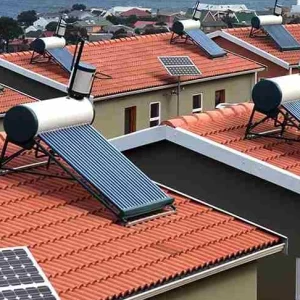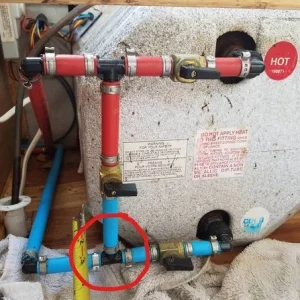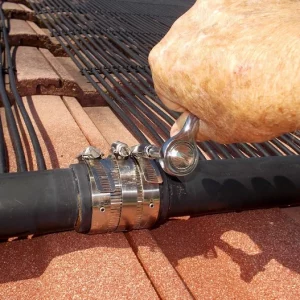Solar energy has come a long way. From basic solar panels on rooftops to more advanced technologies, the quest to harness the sun’s energy in the most efficient manner continues. Among the various technologies available, solar tubes have become increasingly popular for lighting up homes naturally. Yet, one question lingers on many minds: Do Solar Tubes Lose Heat?
To answer the pressing question, “Do Solar Tubes Lose Heat?“, it’s essential to understand their construction. Most high-quality solar tubes are designed with layers that minimize heat escape. However, like all installations that breach the home’s envelope, there may be minute heat losses, especially if not properly installed or insulated.
In this guide, we will shed light on this query, exploring the workings of solar tubes, their advantages, and potential drawbacks. So, buckle up for an enlightening journey!
Understanding Solar Tubes Mechanism
Solar tubes, often termed tubular daylighting devices (TDDs), capture sunlight through a rooftop dome. This light then travels down a highly reflective tube and brightens the room through a diffuser at the ceiling. This method ensures that even on cloudy days, enough sunlight can be channeled to keep the spaces well-lit. Why have solar tubes become such a game changer in recent years? Let’s dive into their numerous advantages. Not only do solar tubes reduce electricity bills by minimizing the need for artificial lighting, but they also have a minimal carbon footprint. Unlike some electrical light sources that emit greenhouse gases, solar tubes provide clean, green illumination. Also, Read: Best Solar Water Heater: Tube vs Panel No product is without its flaws, and solar tubes are no exception. While they offer a plethora of benefits, there are potential pitfalls to be aware of.Benefits of Solar Tubes
Potential Drawbacks
Comparison: Solar Tubes vs. Skylights
When homeowners consider natural lighting options, the battle often boils down to solar tubes vs. skylights. But which reigns supreme? Let’s have a clear discussion.
| Factor | Solar Tubes | Skylights |
| Installation | Usually easier and quicker to install. Requires less structural modification. | More complex installation. May require more structural modifications. |
| Light Output | Directs sunlight into small spaces, providing a focused beam of light. | Provides more diffuse light to a larger area. |
| Cost | Generally cheaper, including installation costs. | Typically more expensive due to higher material and installation costs. |
| Energy Efficiency | Highly energy-efficient, as they use natural sunlight. | Can contribute to passive solar heating but might cause heat loss in colder months. |
| Aesthetic | Offers a focused, spotlight-like illumination. May not fit all design preferences. | Provides a more even illumination and is more suitable for larger spaces. |
| Flexibility | Limited in terms of adjustable light intensity. | Some skylights come with options for shades or blinds to control light. |
| Maintenance | Generally low maintenance, but may need occasional cleaning. | Requires periodic cleaning and maintenance, especially if easily accessible. |
| Leakage | Less prone to leaks due to smaller size and installation design. | More susceptible to leaks if not properly installed or maintained. |
| UV Protection | Generally offers better UV protection due to smaller opening. | Some skylights may require UV-coated glass for protection. |
| Privacy | Provides less visibility from outside due to small opening. | Can compromise privacy if not equipped with blinds or shades. |
| Room Placement | Ideal for rooms without direct access to exterior walls or on lower floors. | Suited for rooms with direct access to the roof and higher floors. |
| Diffusion | Directs light in a focused manner, creating sharper shadows. | Distributes light more evenly, reducing harsh shadows. |
| Rain and Noise | Less affected by rain and noise due to the small opening. | Rain and noise might be more noticeable on larger skylights. |
| Durability | Generally durable, with minimal risk of breakage. | Glass skylights might be prone to breakage from hail or debris. |
Pros and Cons
While skylights provide a view of the sky, they can sometimes result in excess heat or cold entering the home. Solar tubes, with their insulated pathways, often minimize these temperature fluctuations, making them a preferred choice for many.
Materials Used
The efficiency of a solar tube largely depends on the materials used in its construction.
Insulation & Efficiency
Most tubes are lined with a reflective material like silver or aluminum, ensuring maximum light reflection and minimum heat loss. Proper insulation around the tube also ensures that the indoor temperature remains stable.
Installation Process
Thinking of getting a solar tube? Here’s what the installation process looks like.
Step-by-Step Guide
Site Assessment: The installation process begins with a thorough assessment of the site where the solar tube will be installed. Professionals evaluate the layout of the building, the roof’s orientation and pitch, and the potential obstacles that might affect light capture. This assessment ensures that the solar tube is positioned optimally to capture maximum sunlight.
Tube Placement: Based on the site assessment, the path for the solar tube is determined. This includes deciding where the tube will penetrate the roof and travel through the building’s structure to reach the desired room. The ideal location for the tube’s entrance point on the roof is chosen to ensure optimal light capture throughout the day.
Installation: The installation process involves several key steps:
- Roof Dome Placement: A hole is cut in the roof at the predetermined location, and the roof dome is securely installed. The dome is designed to capture sunlight from various angles and direct it into the reflective tube.
- Reflective Tube Attachment: The reflective tube, which is typically made of highly reflective material, is connected to the roof dome. The tube channels captured sunlight downward through its reflective surface, ensuring minimal light loss during transit.
- Ceiling Diffuser Installation: Inside the building, the ceiling diffuser is installed at the endpoint of the reflective tube. This diffuser evenly distributes the captured sunlight into the room below, providing soft and natural illumination.
Inspection: After the solar tube is fully installed, a thorough inspection is conducted. Professionals check for any gaps, misalignments, or potential issues that might affect the performance of the solar tube. This step ensures that the system is properly sealed and aligned, minimizing the risk of leaks or reduced light transmission.
Completion: Once the inspection is complete and any necessary adjustments are made, the installation process is considered finished. Occupants can now enjoy the benefits of natural sunlight streaming into the room through the solar tube.
Enhancing Efficiency
Want to get the most out of your solar tube? Here are some pro tips.
Tips & Tricks
Regular Cleaning: To ensure optimal light capture, it’s important to keep the roof dome of your solar tube clean and free from dirt, dust, and debris. Regular maintenance, such as cleaning the dome’s surface, will prevent light blockages that could diminish the tube’s efficiency over time.
Insulate Well: Proper insulation around the solar tube is essential for preventing heat loss during colder months. Well-insulated tubes minimize the transfer of heat between the interior and exterior, helping maintain comfortable indoor temperatures.
Future of Solar Tubes
With advancements in technology and a growing emphasis on sustainable living, the future of solar tubes is promising. Here are a few potential developments that might shape the evolution of solar tube technology:
- Increased Efficiency: Ongoing research and innovation may lead to the development of more efficient reflective materials, better light redirection systems, and enhanced dome designs. These improvements could result in even higher light capture rates and more consistent performance, even in varying sunlight conditions.
- Integrated Energy Solutions: Solar tubes might be integrated with energy storage systems, allowing excess captured sunlight to be stored for use during cloudy periods or at night. This integration could make solar tubes a more reliable source of illumination, reducing their dependence on direct sunlight.
- Smart Technologies: The integration of smart technologies, such as sensors and automated shading systems, could optimize the use of solar tubes. These technologies could adjust the light output based on the available sunlight, time of day, and occupancy, maximizing energy savings and comfort.
- Affordability and Accessibility: As solar tube technology matures and becomes more widely adopted, economies of scale could lead to reduced manufacturing costs and increased affordability. This could make solar tubes accessible to a broader range of homeowners and businesses.
- Architectural Integration: Future solar tubes might offer more design flexibility, allowing them to seamlessly blend with various architectural styles. This could lead to the integration of solar tubes in both residential and commercial spaces without compromising aesthetics.
- Sustainable Living: Solar tubes align with the growing trend toward sustainable living by reducing energy consumption and promoting the use of natural resources. As awareness of environmental concerns increases, the demand for energy-efficient lighting solutions like solar tubes is likely to rise.
FAQs on Do Solar Tubes Lose Heat?
While solar tubes are designed to minimize heat loss, minor losses might occur, especially if the tube isn’t properly insulated. With proper maintenance, solar tubes can last for 20 years or more. Yes! Due to their reflective materials, solar tubes can effectively channel light even on overcast days. While the initial investment might seem high, the savings on electricity bills and their longevity make solar tubes a cost-effective solution in the long run. No, solar tubes rely on sunlight. However, some models come with integrated electric lights for nighttime use. Yes, with proper planning, solar tubes can be installed in multi-story buildings, though the tube length and potential obstructions need to be considered.Do Solar Tubes Lose Heat?
How Long Do Solar Tubes Last?
Can Solar Tubes Work on Cloudy Days?
Are Solar Tubes Expensive?
Do Solar Tubes Provide Light at Night?
Can Solar Tubes Be Installed in Multi-story Buildings?
Conclusion
Solar tubes have emerged as a beacon of hope for those seeking sustainable and efficient lighting solutions. While the question, “Do Solar Tubes Lose Heat?” yes, but we’ve seen that with proper insulation and high-quality materials, heat loss can be minimal. Embracing this innovative technology not only lights up our homes but also our path towards a brighter, greener future.
- Swimjoy Solar Panels 2023: In-Depth Review & Insights - June 22, 2024
- How to Calculate Your Pool’s Square Footage Accurately? - October 15, 2023
- Pool Expansion Guide: Making Your Existing Pool Bigger! - October 15, 2023
